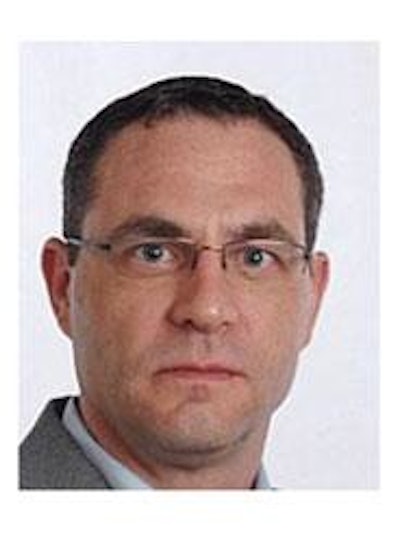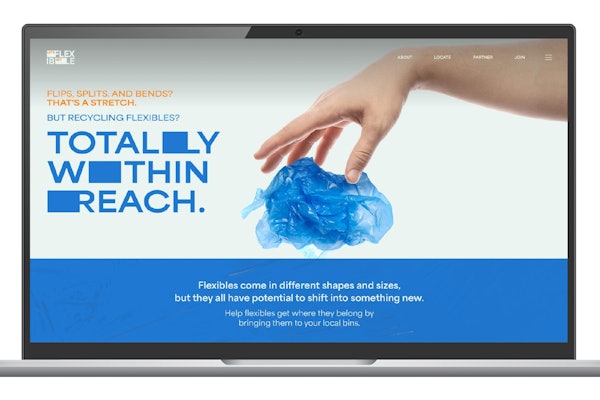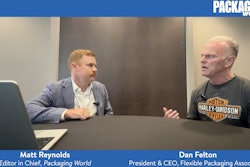
Packaging World:
In part one, you established how workforce engagement can be transformative for a company. Where does our industry stand on developing it?
Scott Spencer:
Recently, a mentor of mine has been really focused on engagement. He pulled some statistics that are pretty mind boggling. A Gallup survey from a couple of years ago measured the amount of our workforce that is actively engaged in driving KPIs and results for the organization. The percentage is in the upper ‘teens at best. Just stop and think about it—less than a quarter, less than a fifth, of your workforce is actively engaged. That’s a huge potential source of productivity for every organization. When you do get an organization, a plant, an entire supply chain, or even just a line or a business unit that’s actively engaged, you can see the numbers they deliver every day on their standard metrics and KPIs. That engagement, that culture change, is so key to driving not only long-term sustainability, but then also the day-to-day KPIs that are so critical in the short term.
You also mentioned that this engagement can come in the form of Autonomous Maintenance, where operators take full responsibility for their equipment. What are some other areas where you can build engagement?
In driving any kind of continuous improvement effort, you need to focus on short-term wins and delivering tangible results quickly in order to self-fund. The version of continuous improvement that I’ve deployed, mostly, is some version of the concept of Total Productive Maintenance (TPM). This construct has a set of pillars. The numbers vary depending on different ways of implementation, but usually it can be seen as a single foundation supporting certain pillars, like Autonomous Maintenance, Preventative Maintenance, Focused Improvement, Safety, and Quality.
Those pillars can only exist on a foundation. And the foundational aspect of TPM is simple, in my opinion. It’s developing a culture that looks at a zero-loss mentality, or working not to a planned or budgeted loss, but to perfection.
Can you give some examples of this?
Whatever it is a company is producing, anything from component assembly of electronics to making sandwich crackers, there’s a yield loss, and most companies budget for that. For every hundred components I make, one of them is going to be defective, so I have 1% yield loss. Most people budget that in, and when they report out, they report out against those budgets. I may be slated to make 99 units per day and not 100 units per day, because I’m planning for that yield loss.
Zero-loss mentality, as part of the foundational element of TPM, does not consider yield loss to be acceptable. It focuses on a theoretical maximum, whether that’s in terms of units per day or whatever the metric, and that is what I am going to rate myself against, every single day. So if I can make 100 units per day, but I continue to make 99 units per day, then I need to figure out how to eliminate that 1% of yield loss.
How do you accomplish this?
The way you do that is, again, simple. At the start of every shift, or the start of every day, you say to the team, “How did we do yesterday?” We look at our KPIs and ask, “How close did we come to perfection, to zero loss? Did we do well or poorly?” If we did well, we ask, “How do we sustain that? What do we need to do today?” If we did poorly, we ask, “What are some of the things we’re going to change to perform better today?” It sounds extremely simple, but you can see incredible productivity gains just by looking at things via zero-loss instead of a budgeted yield loss.
How common is this approach?
I’ll be honest with you, a lot of organizations I’ve worked with never even considered zero-loss a KPI. They didn’t even realize that their budgets were already built to be a little bit behind the times and a little behind the eight ball. Compounding that, they didn’t even achieve that budgeted loss number very often.
By looking at a small set of KPIs every day, and then adjusting your performance on a day-to-day basis with the team, driving engagement and asking operators, “How are we going to get better today?,” that drives incredible benefits. And it can be very short term. Just by changing the perception of what constitutes good—good enough compared to yield-loss budget standards vs. good enough compared to zero-loss standards—that can drive incredible improvement.
Any pitfalls to avoid when implementing this kind of change?
A lot of times folks will try to roll this out across the whole supply chain by trying to do it uniformly across multiple facilities. If there are a ton of KPIs everyone is said to be responsible for, that really drags down the whole situation. People aren’t engaged because they may not be able to influence a certain KPI. Why would they even be looking at it?
The key here is to start small. Start at the business-unit level, or at the plant level, with a small number of very applicable KPIs that the associates and the team can actually impact. Trust me, you’ll see that impact in the short term, and you’ll end up meeting those quarterly objectives that might otherwise constrain continuous improvement.
So the zero-loss mentality is the foundation of this model. Describe some of the pillars you mentioned, and how to employ them.
Once you have that zero-loss foundation set up, I mentioned [in part one of this interview, which can be found here: pwgo.to/3499] driving Focused Improvement, or Kaizen-type events, with small, targeted teams focusing on the big losses any supply chain has. We all call these the low-hanging fruit. You’ll walk into some companies and see that it’s not even low-hanging, it’s just sitting on the ground. How do we go and pick that up? We consider Focused Improvement to be a money pillar because you will usually have some subject matter experts you can either pull out on a part-time basis or on a full-time basis, who will give you some breathing room from your day-to-day production to target some of those big losses you have. You can generate huge, quick wins with the Focused Improvement pillar when you target something specific. With a zero-loss mentality in place, an existing budget of 7% yield loss on a product, and a 7% loss beyond the budget, then you’re looking at a 14% possible gain through the zero-loss lens. That can drive some big productivity gains.
Any other pillars?
Preventative Maintenance is a pillar that’s very similar to the foundation because if you don’t have a strong, well-structured maintenance team that’s able to execute maintenance repairs and work orders on a routine basis, you end up frustrating the other teams. An Autonomous Maintenance team will identify a defect, and then that defect is not rapidly corrected. It sits for weeks or months because the maintenance team isn’t organized enough to rapidly fix it. They might not have the parts, the right people, or the skills, whatever it might be. But if they don’t fix that defect, that will disengage the Autonomous Maintenance people right away because they’ve identified the problem. They see the problem isn’t getting fixed, and it’ll be perceived as the status quo of nobody listening to the operators. That creates a moment of disengagement.
So while Preventative Maintenance is another money pillar, it really is more foundational, in my opinion. It enables the Autonomous Maintenance teams who are driving that daily, continuous improvement. It also enables the Focused Improvement teams who are driving that step change, where they look at a specific area and can come up with a big productivity win, as long as we can execute the win.
It sounds like it’s important not to go all-in on one pillar and neglect another. But it’s also important not to try to do too much, too fast. How do you balance between the two?
That’s where the organizational challenge comes in, and it goes back to the premise of building a continuous improvement effort while also focusing on the short term. A lot of companies end up building an organization that supports too many pillars. Then you have this financial drain where you’ve got pillar leaders, organizers, etc., and you’ve got too many people who need to get immediately engaged for it to work.
In my current company, we’ve built an organization, but it’s relatively small. We have four dedicated people, a Foundation leader, an Autonomous Maintenance pillar leader, a Focused Improvement pillar leader, and a Preventative Maintenance pillar leader. Even at only four people, it occuppies significant resources, but an acceptable amount because we’re able to focus on delivering those quick wins to self-fund.


























